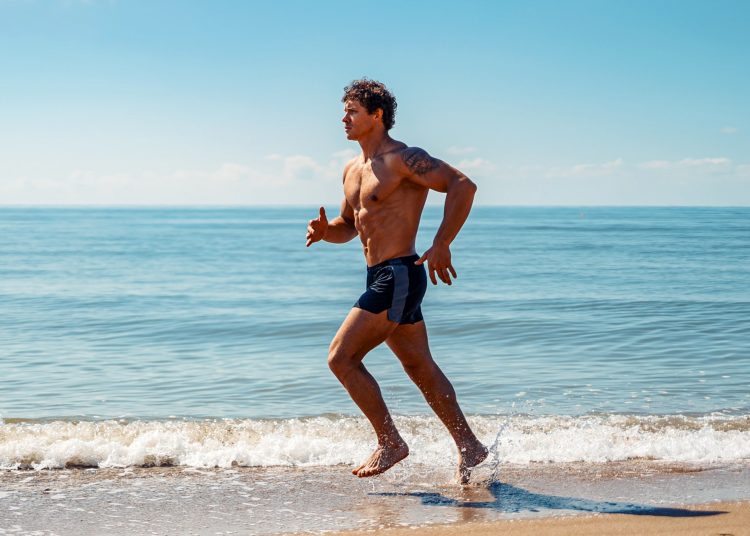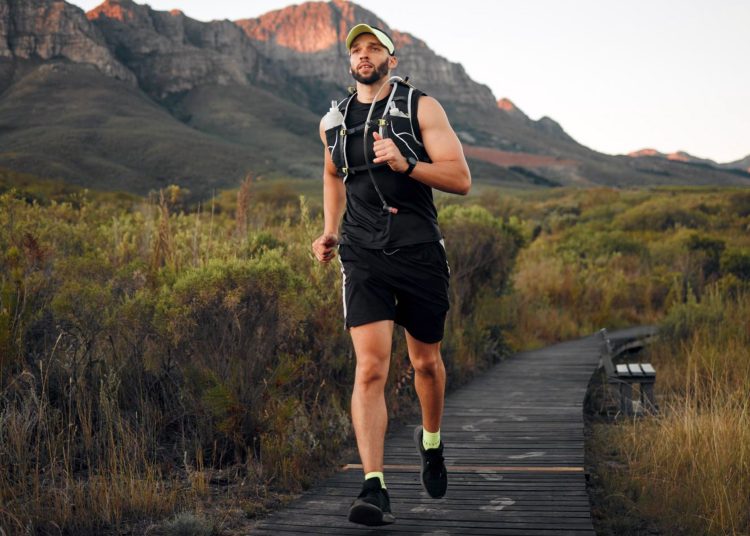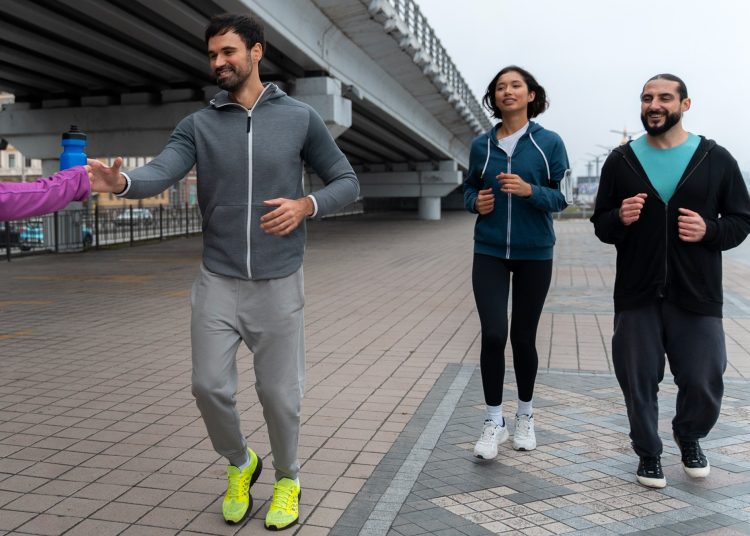The treadmill is one of the most dreaded machines in the gym. The constant whir of the machine’s belt can sap the energy of the most motivated exercisers. There is a reason why most gyms have TV screens installed in front of the treadmills. Starting at the machine’s console or the wall can make exercising feel more like a chore than a workout.
Many of my personal training clients ask how they can ditch the treadmill for more dynamic exercises. The good news is there’s a fantastic alternative that’s both free and effective: outdoor walking. It can boost enjoyment and potential results.
A study published in the Journal of Neurophysiology concluded that people can adjust their walking patterns faster while walking outdoors compared to walking on a treadmill. This suggests that it might be better to do physical therapy exercises outside. (1)
Another study published in the Medicine and Science in Sports and Exercise Journal reported feeling more positive than those who walked on a treadmill (2). These research findings indicate that there are more psychological and physiological benefits of walking outside the gym.
In this article, I highlight the benefits of outdoor walking and give you three walking routines that vary in intensity, terrain, and duration to maximize your performance and results.
“No two steps are exactly the same, especially on a trail versus on a road or sidewalk. It recruits slightly different muscle groups, which can lower the risk of overuse injuries. For the same reasons, walking outdoors may engage more muscle groups than a treadmill,” said Dr. Theresa Shoemaker, a physical therapist based in Wyoming.
Get Fitter, FasterLevel Up Your Fitness: Join our 💪 strong community in Fitness Volt Newsletter. Get daily inspiration, expert-backed workouts, nutrition tips, the latest in strength sports, and the support you need to reach your goals. Subscribe for free!
Beach Walk: 30-Minute Outdoor Walking Routine
Walking outdoors allows you to change the training intensity and duration.
In my seven years of experience as a personal trainer, I’ve noticed that treadmill users often maintain the same pace throughout their workout.
Let’s be honest: changing the treadmill’s speed after every few minutes can be cumbersome. It is much more efficient to stick to a maximum walking speed and slow down to a set speed to catch your breath when you are tired.
While this technique might help you hit your distance or calorie target, it won’t feel natural. When walking outdoors, most people change their speeds throughout the workout based on how they are feeling.
If you’re tired of walking on the treadmill, I propose a much better alternative: beach walks.
Beach walking might seem like a leisurely activity, but with a few strategic changes, you can turn it into an intense training session for burning calories and sculpting your legs.
Why are beach walks so effective?
Walking on the soft sand pushes your muscles to work harder with every step. It’s almost like walking with ankle weights. Most of my personal training clients report getting a massive calf pump after their beach walk sessions.
Walking on uneven surfaces also fires up your stabilizer muscles, which can improve your overall balance and coordination, something you cannot achieve with treadmill walks.
30-Minute Beach Walk Workout
Below is how to get the most out of your 30-minute beach walk workout:
| Phase | Activity | Time | Intensity |
| Warm-Up | Dynamic stretches | 3 minutes | Light |
| Light jog | 2 minutes | Easy | |
| Workout | Brisk walking intervals on soft sand | 3 minutes fast / 1 minute moderate | Repeat x 5 (20 min total) |
| Walking lunges | 2 minutes | Moderate | |
| Side shuffles in soft sand | 2 minutes | Moderate | |
| Cooldown | Slow walk | 1 minute | Easy |
Read also: Beach Running Guide.
Warm-Up
Begin the workout with 5 minutes of dynamic stretching, including arm circles, leg swings, and torso twists. These boost blood flow to the target muscle and loosen up the muscles, joints, tendons, and ligaments.
Next, jog for 2 minutes at an easy pace on firm sand closer to the water’s edge. Remember, this doesn’t have to be an all-out effort. Just enough to make you feel comfortable for your brisk walk session.
Walking Workout
A walking workout doesn’t mean you can be lazy and drag your feet through it. Most walking workouts involve brisk walks. In this workout, you’ll alternate between 3 minutes of fast walking on the soft sand and 1 minute of recovery walking at a moderate pace.
After five cycles of brisk and moderate-pace walking, you’ll perform walking lunges and side shuffle for 2 minutes on the soft sand.
Cool Down
End the workout with a 1-minute slow walk. You could also squeeze in a short static stretching session in the end to kickstart your recovery.
Pro Tip: Experiment with different footwear for this workout. You can do this workout barefoot or wearing your old sneakers.
Hill Hike: 30-Minute Outdoor Walking Workout
Level Up Your Fitness: Join our 💪 strong community in Fitness Volt Newsletter. Get daily inspiration, expert-backed workouts, nutrition tips, the latest in strength sports, and the support you need to reach your goals. Subscribe for free!
Although most commercial treadmills have an incline feature, it is nothing like climbing a mountain. Walking uphill puts significant demand on the glutes, calves, and thighs and can lead to a firmer and stronger rear.
Climbing a hill also demands more energy than walking on a flat surface, leading to a higher calorie-burning rate.
30-Minute Hill Hike Walking Workout
You don’t need to find a massive hill for this workout. You could pick a park, hiking trail, or even a hilly neighborhood street. That said, the steeper the hill, the harder the workout will be.
| Time | Activity | Intensity |
| 5 min | Warm-up | Light |
| 10 min | Hill Intervals | Moderate-Hard |
| 5 min | Active Recovery | Light-Moderate |
| 5 min | Strength Boost | Moderate |
| 5 min | Cool-down | Light |
Warm-Up
Walking uphill can be more strenuous on the lower body joints and muscles than walking on a plain surface. Prepare for the workout with dynamic stretches like ankle circles, hip flexor stretches, and leg swings. You could also do a gentle jog on the plains to get the blood pumping.
Workout
Perform a 10-minute power walk on a moderate incline. Focus on engaging the calves and quads with each rep. At the end of 5 minutes, turn around and walk downhill at a controlled pace with your core braced and shoulders pulled back and down.
The up and downhill walk with likely set your lower body on fire. Perform a 5-minute recovery walk at a moderate pace on a flat surface; it will feel better.
Once the lactic acid is out of the legs, it’s time to do some strength work to build bigger and stronger wheels. Perform two to three sets of 10-12 lunges per leg.
Cooldown
Conclude the workout with 5 minutes of static stretches on flat ground. I recommend holding each stretch for at least 30 seconds for the best results.
Pro Tip: Begin with smaller hills and use sneakers with sturdy ankle support and traction to reduce the risks of joint strains and falls.
City Walk: 30-Minute Outdoor Walking Workout
Walking around your city can help you sculpt your legs, torch calories, and lose weight. The city landscape combines uneven terrain, stairs, and obstacles that’ll challenge your body in new ways.
“Walking around your neighborhood can make you feel connected to your community as you meet people on your walks. This can be invaluable, especially with remote work limiting face-to-face social interactions,” explains Juliet Rodriguez, a corrective exercise specialist.
30-Minute City Walk Workout
People who despise monotony in their cardio workouts should consider taking their workouts outdoors.
| Phase | Exercise | Duration | Sets |
| Warm-Up (5 minutes) | Side Shuffles | 60 seconds | 3 |
| Backward Walking | 30 seconds | 2 | |
| Workout (20 minutes) | Stair Climbs | 2 minutes | 4 |
| Curbside Lunges | 1 minute | 2 | |
| Power Walk | 2 minutes | 3 | |
| Slope Climbs | 1 minute | 4 | |
| Cool-down Stretches (5 minutes) | Recovery Walk | 3 minutes | – |
| Static Stretches | 2 minutes | – |
Warm-Up
Warm up for the workout with side shuffles and backward walking. This will ensure your lower body joints are properly warmed up. Feel free to alternate between the two exercises to minimize rest time between sets.
Workout
The city walk workout is a mix of several implements. Find a spot that has all three things in close proximity: stairs, pavements, and a slope. Feel free to improvise if you don’t have access to all of them.
Begin with the stairs, as they will get you a sick leg pump. Alternate between single and double steps for maximum burn. Then, perform walking lunges on the curbside. You could also do step-ups on a bench.
For the third exercise, brisk walk as fast as possible. You could also add power walks between stair climbs and lunges. Conclude the workout with a fast-paced walk up and down a steep hill.
Cooldown
Use a leisurely paced walk to cool down after the workout. Then, perform a series of static stretches to flush the lactic acid out of your muscles.
Pro Tip: Head out for this workout early in the morning, as the streets will be empty, and you will have more space for your workouts.
Tips For Maximizing Your Walking Workouts
Make no mistake. These walking workouts aren’t just a stroll in the park. Using the right approach can help you tone your legs and maximize calorie burn. Here are a few tips to maximize your workout efficiency:
- Proper Form: Keep your torso upright, core tight, and shoulders pulled back and down while walking on flat surfaces. Swing your arms naturally and take purposeful strides, heel to toe.
- Power of Intervals: Alternate between faster and slower walking speeds throughout your workout to burn more calories. It also makes your workouts more challenging and interesting.
- Use Walking Poles: Employing walking poles, especially on uphill walks or trails, can boost your training performance. It also helps take tension off your lower body joints and lower back.
- Fix Your Diet and Hydration: Drink at least a gallon of water daily and eat in a calorie deficit to lose weight.
Conclusion
Walking workouts are an incredibly effective tool for people looking for a break from monotonous treadmill sessions or those recovering from an injury and seeking a low-impact form of training.
The beach walk, hill hike, and city walk workouts detailed above are excellent for people of varying experience levels. Feel free to alternate between the three to keep your workouts exciting and challenging.
If you have any doubts about the three walking workouts listed in this article, drop them in the comments below, and I’ll be happy to help!
References
- Ochoa J, Sternad D, Hogan N. Treadmill vs. overground walking: different response to physical interaction. J Neurophysiol. 2017;118(4):2089-2102. doi:10.1152/jn.00176.2017
- da Silva, Sergio & Guidetti, Laura & Buzzachera, Cosme & Elsangedy, Hassan & Krinski, Kleverton & Campos, Wagner & Goss, Fredric & Baldari, Carlo. (2010). Psychophysiological Responses to Self-Paced Treadmill and Overground Exercise. Medicine and science in sports and exercise. 43. 1114-24. 10.1249/MSS.0b013e318205874c.












